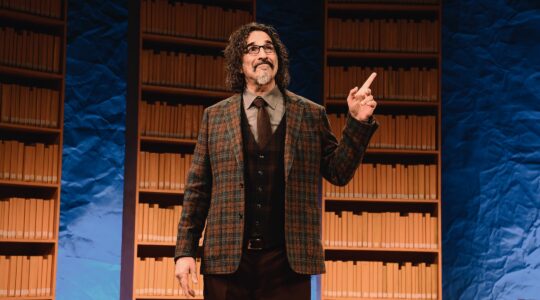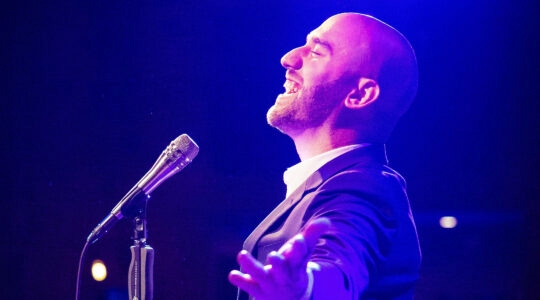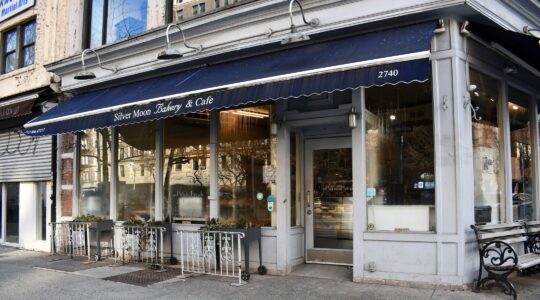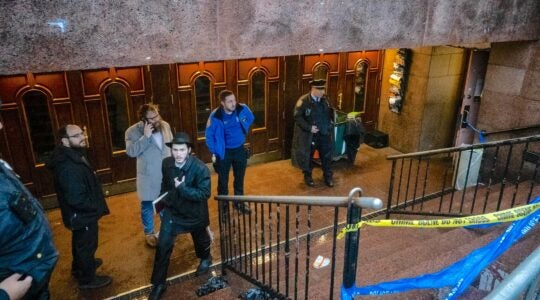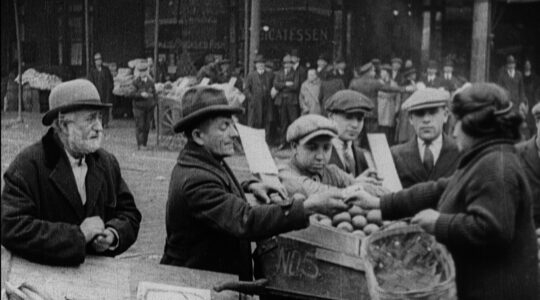Maurice Levonbron was born eight years after his synagogue.
As the Huntington Jewish Center prepares to celebrate its 100th anniversary next March, it has begun collecting reminiscences from some of its longtime members, including Levonbron, who celebrated his bar mitzvah there 79 years ago.
"We went to the shul and I had my bar mitzvah and my mother later had a dinner [for the relatives] at home," said Levonbron, a retired lawyer who celebrated his 92nd birthday Sept. 4.
He recalled in an interview with The Jewish Week that on the High Holy Days in the 1920s the rabbi "wore long tails and a high hat."
"I was very impressed with the tails," he said.
Incorporated in 1907 as the Huntington Hebrew Congregation, one of the first things the members did was to establish a cemetery. One of the founding families, William and Yetta Teich, donated their 22-acre south pasture for the cemetery in 1908, according to their great-granddaughter, Judy Leopold.
"Our people needed a kosher cemetery long before they needed a shul to worship in, because they held services in my great-grandmother’s living room," she said. "We think services started in 1896."
That was the same year the Teichs and their four daughters arrived in the United States from Russia.
"When they came off the boat, my great-grandmother saw that it was densely populated," Leopold said. "So they traded a pair of candlesticks for a horse and a wagon. They loaded all their possessions in the wagon along with their four daughters and they headed east in search of a minyan. They heard there was one in Port Jefferson, but the horse dropped dead so they settled here."
The spot where the horse died became the Teichs’ dairy farm; it is now the synagogue’s current home on Park Avenue.
"My grandmother told me that no one was allowed to speak anything but English in the house because they were proud to be Americans," Leopold recalled.
Levonbron said his father served as president of the congregation for eight years and that board meetings were "conducted in Yiddish and broken English, and the minutes were kept in Yiddish." The congregation’s first synagogue was built on Church Street in Huntington in 1911. Levonbron said it had no plumbing or heating but rather a potbelly stove. The expanding congregation outgrew the building and in the midst of the Depression a new synagogue was built about one mile away on Nassau and Woodhull streets in January 1934. Levonbron’s father served as chairman of the building committee. The Nassau-Woodhull edifice served as the congregation’s home until the current building was erected in 1961; Levonbron chaired the building committee and was later given a watch by the congregation with the inscription, "Like father, like son."
When it opened, men and women sat together for the first time.
"It was pretty much accepted [by then because] the complexion of the community was changing" from Orthodox to Conservative, Levonbron said.
The congregationís current rabbi, Neil Kurshan, has been there 21 years. He noted that each of his five predecessors had a long tenure.
"This is a progressive congregation," he said. "It has often been on the cutting edge. In 1986 it became the first [Conservative congregation] to become egalitarian in Suffolk County."
In addition, he said it was the first in the county to hire a full-time family life educator, and it also developed a two-year program to explore spirituality.
Gloria Safran, another longtime member, said a hallmark of the congregation is that it has "always been forward-looking and in the forefront of Jewish education. We always had a full-time principal."
In fact, Levonbron said he remembered attending Hebrew school in the 1920s taught by a trained teacher who arrived by train just before the start of class. "If the train was 5 or 10 minutes late, we’d walk to the movie theater and tell Mr. Goldstein, who was a member of the congregation, that the teacher didn’t show up," he recalled. "He’d say to come in, and we’d see the movies and miss class. The teacher would come, and we’d already have taken off."
A history of the congregation as told through photographs and documents is on display near the synagogue’s main entrance. Leopold said her late mother, Leah Greene, had put together artifacts from her grandmother as well as items loaned by other congregants.
Cheryl Silberman, the chair of centennial programming, said a variety of celebratory events have been scheduled for the congregation’s 375 member families. At a kickoff brunch last month, Levonbron spoke of the congregation’s early years.
Rabbi Kurshan said there are also plans to launch an endowment campaign.
"Just as the founders made sure [the congregation] was here for us, we want to make sure it is here for generations after us," he said.
The New York Jewish Week brings you the stories behind the headlines, keeping you connected to Jewish life in New York. Help sustain the reporting you trust by donating today.
